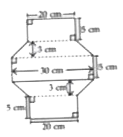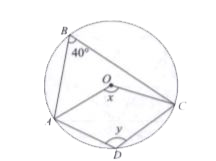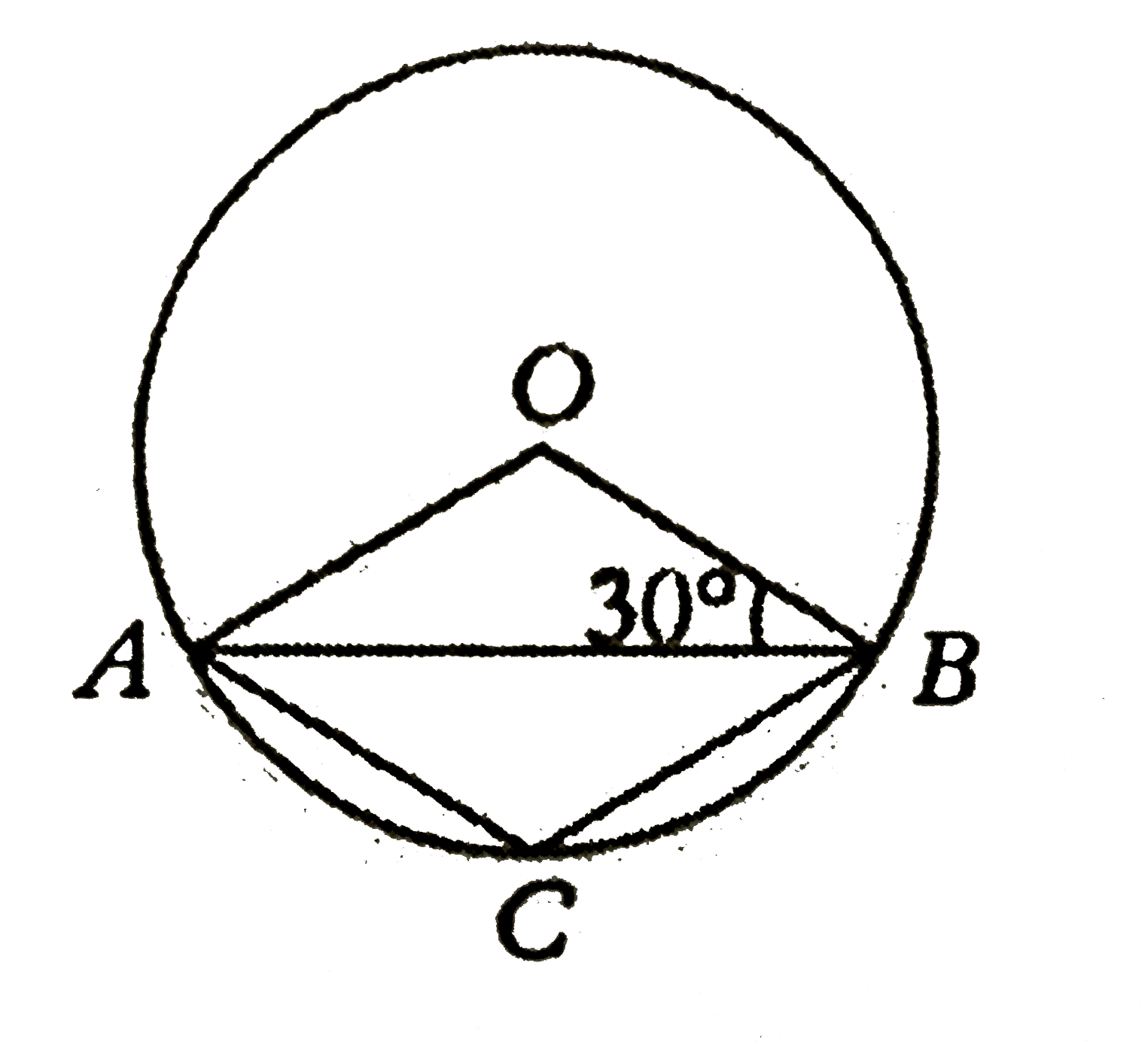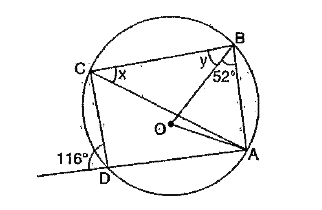Solve the following questions.
(i) In the given figure (not drawn to scale), O is the centre of a circle and PQ is the diameter. If ∠ROS=40∘, then find ∠RTS.

(ii) In the given figure (not drawn to scale), ∠BAD=78∘,∠DCB=xand∠DEF=y. Find the sum of x and y.

(i)(ii)90∘102∘
(i)(ii)20∘78∘
(i)(ii)70∘204∘
(i)(ii)60∘102∘
The correct Answer is:C
Step by step video, text & image solution for Solve the following questions. (i) In the given figure (not drawn to scale), O is the centre of a circle and PQ is the diameter. If angleROS = 40^@, then find angleRTS. (ii) In the given figure (not drawn to scale), angleBAD = 78^@, angleDCB = x and angleDEF = y. Find the sum of x and y. by Maths experts to help you in doubts & scoring excellent marks in Class 9 exams.
Topper's Solved these Questions
- BOOK - SCIENCE OLYMPIAD FOUNDATION CHAPTER - IMO QUESTION PAPER SET B 2019EXERCISE - EVERYDAY MATHEMATICS10videos
IMO QUESTION PAPER SET B 2019
- BOOK - SCIENCE OLYMPIAD FOUNDATION CHAPTER - IMO QUESTION PAPER SET A 2019EXERCISE - Achievers Section5videos
IMO QUESTION PAPER SET A 2019
- BOOK - SCIENCE OLYMPIAD FOUNDATION CHAPTER - INTRODUCTION TO EUCLID'S GEOMETRYEXERCISE - Achievers Section (HOTS)3videos
INTRODUCTION TO EUCLID'S GEOMETRY
Similar Questions
Knowledge Check
- Question 1 - Select One
Find the area of the given figure (not drawn to scale).
 A650 cm2B500 cm2C575 cm2D525 cm2
A650 cm2B500 cm2C575 cm2D525 cm2 - Question 2 - Select One
Find the area of the given figure (not drawn to scale).
 A3339.29 cm2B3539.29 cm2C3539.29 cm2D5967.47 cm2
A3339.29 cm2B3539.29 cm2C3539.29 cm2D5967.47 cm2 - Question 3 - Select One
In the given figures, value of y (O is the centre of the circle) is
 A100∘B120∘C130∘D140∘
A100∘B120∘C130∘D140∘
Find the perimeter of the given figure (not drawn to scale).
 View Solution
View Solution
In the figure (not to scale ), O is the centre of the circle and ∠OBA=30∘. Find ∠ACBView SolutionIn the given figure, find x + y.
 View Solution
View SolutionIn the given figure (not to scale ) , O is the centre of the circle . A ,B,C and D are conyclic and AB =CD . If ∠MON=120∘ , then find ∠OPN .
 View Solution
View SolutionIn the given figure (not drawn to scale), ABCD is a square such that AE = DE. Find ∠BEC.
 View Solution
View Solution


